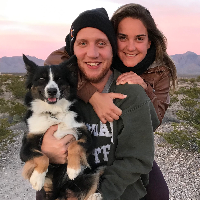Why Facial Coverings Aren't Going Anywhere
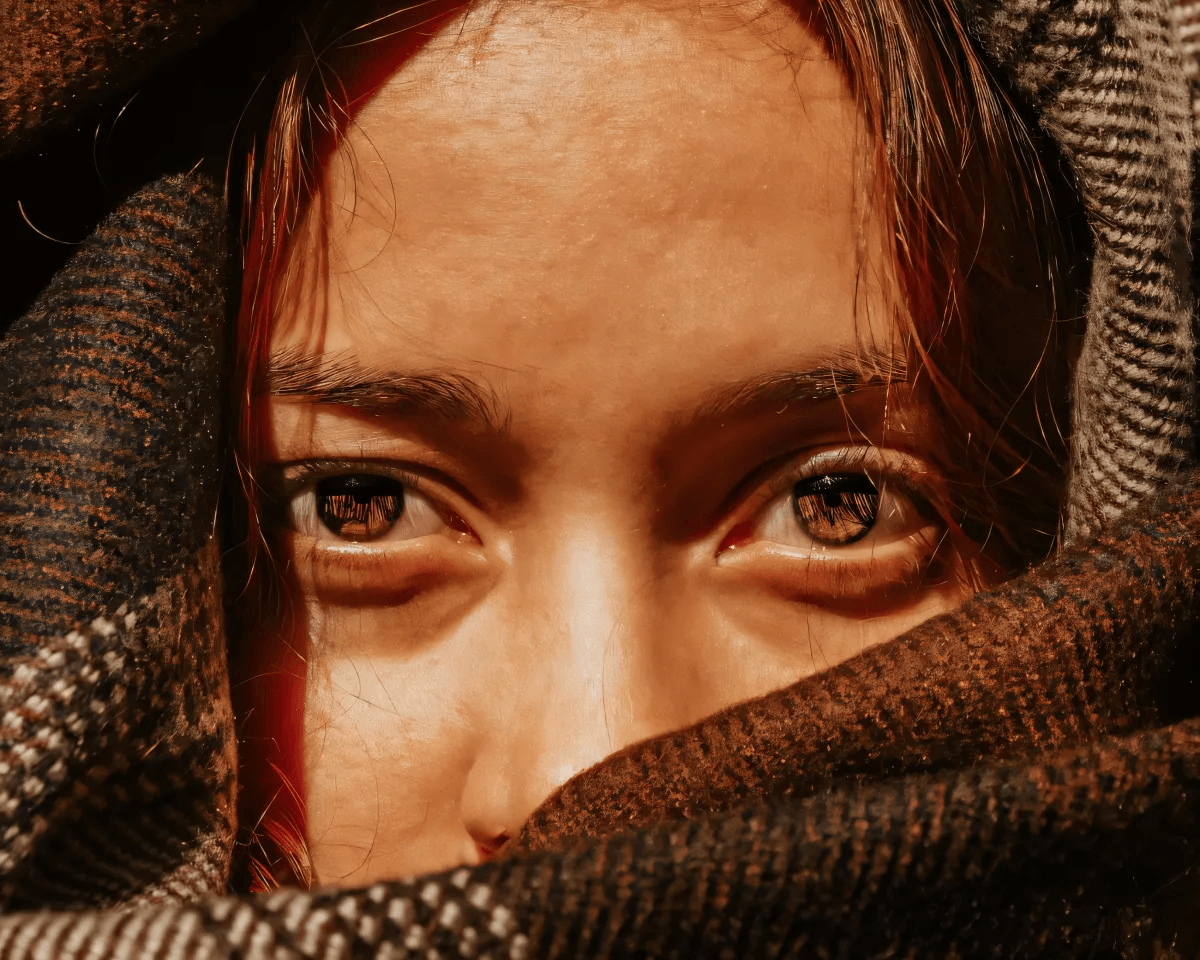
A lot has been uncovered in the last couple of years, but 2020 caused one thing to become widely covered. Faces. Controversial or not, face masks and other facial coverings have garnered global attention due to the pandemic.
While those blue paper-like masks have come to the forefront as our idea of a mask, facial coverings have historically been used in a wide variety of ways.
This article will largely be focused on those many other applications to facial coverings that have been used in ceremonies, hobbies, professions, and everyday life. There are so many possible applications for facial coverings, you are likely to keep a couple in your wardrobe for future usage.
Facial Coverings Have Many Functions
Masks and facial coverings have been utilized in functional ways for a long time. In almost every single application, facial coverings have one overarching motive: protection.
Masks offer the wearer protection from being identified, protection while offering a performance, protection from the cold, from unwanted particles and other potentially harmful substances or foreign media.
Certain cultures have facial coverings built into their clothing styles. Facial coverings can be a lot of fun as well, like Halloween or masquerades and fancy events.
Religious and Spiritual Applications of Masks
In some of their earliest applications, masks were used in religious and social scenarios. They offered protection from the inner-self while channeling or symbolizing gods or spirits in rituals.
Masks have been utilized in this fashion for some 30,000 years and all across the globe by a multitude of cultures. They have maintained relevance in some cultures more than others, but their history within ceremonial usage is strong.
In more modern-day applications, facial coverings and masks offer more physical protection than spiritual. However, the physical protections are likely more versatile and widely useful than you may have considered.
Facial Coverings Protect From The Cold
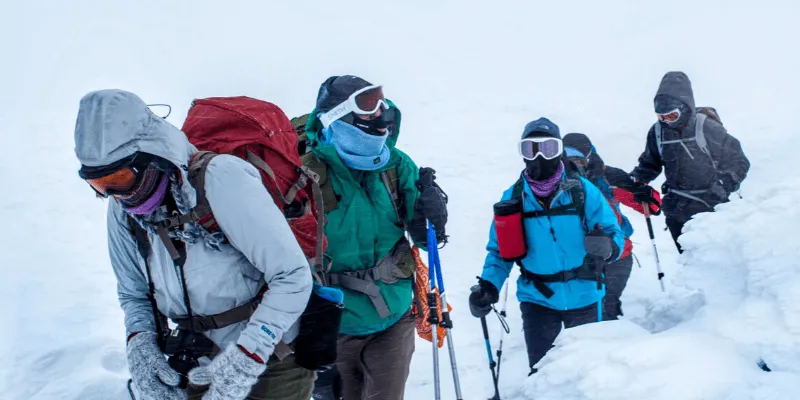
In cold weather, a facial covering offers protection and warmth. When you hear the phrase "ski mask", you may actually picture a bank robber before an actual skier.
Ski masks were originally created to essentially be a sweatshirt for your head. Winter sports take place in cold and sometimes extremely windy environments, so protection from the elements is essential.
Facial coverings for winter activities have evolved, with more options like buffs, gaiters, and balaclavas becoming commonplace for people looking to hit the slopes.
Clothing keeps you warm by trapping air near your body. That air is then warmed by our own warmth and body heat, and kept near your skin in order to keep you warm. That cycle then continues, as warmer air being near your skin will keep your body warmer and will produce more heat. This is why layering clothing is very effective in creating and keeping you warm in colder weather.
The exact same principle applies with a facial covering. Albeit a single layer of coverage, the amount of warmth trapped from your body heat as well as exhaled air makes a huge difference.
I actually kept a face mask on when I got home from work and had to shovel my driveway this winter. I completely forgot I had a mask on after wearing one at work all day and was surprised with how warm I was during the completion of the chore. Wearing warm clothing otherwise, feeling the cold on my face is typically what would make me uncomfortable in the winter. A facial covering solves that issue.
Facial Coverings Provide Sun Protection
Facial coverings like bandanas, buffs, and gaiters also provide valuable protection in the summertime or hot sunny weather. Many people in both work and hobbies utilize facial coverings during their days in the field or on the water.
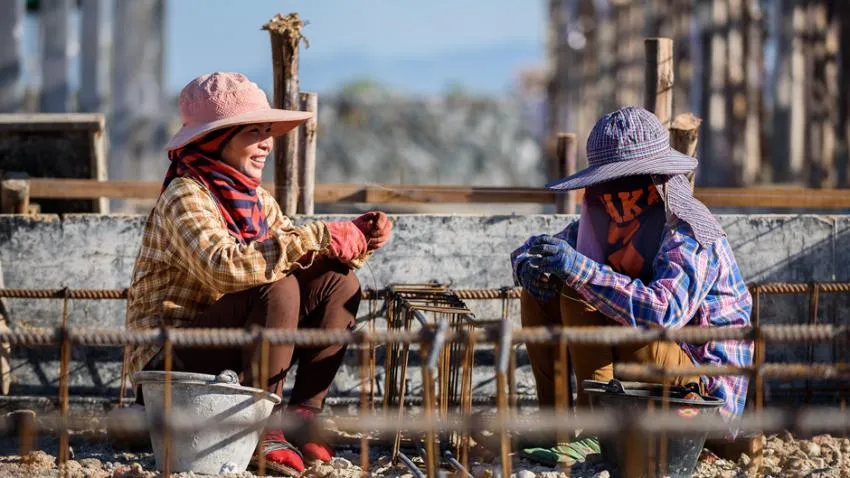
This image shows two women laborers talking during their workday. They both have large hats, long sleeves and pants, gloves, and headwraps with facial coverings. It is clearly a very sunny day where they are working, likely quite warm if not hot as well and yet they are almost entirely covered.
The workers are utilizing physical barriers for protection from the sun. A physical barrier can work as well or better than sunblock to keep UV rays from damaging skin and making you extremely uncomfortable.
Facial coverings in particular offer great physical protection for one of the more sensitive areas to sunburn, also creating a shaded area to help keep the wearer cooler overall.
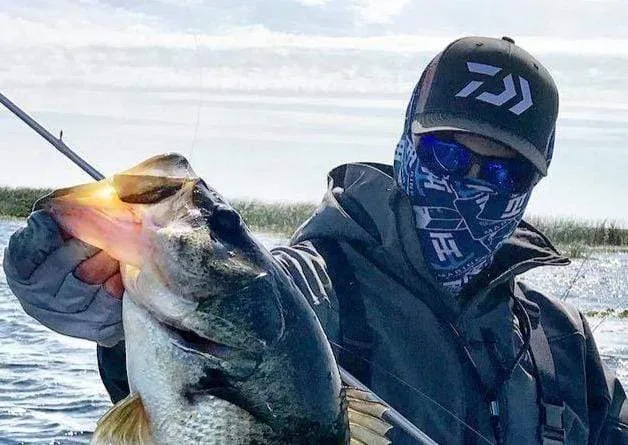
This fisherman shows the use of a gaiter in combination with sunglasses, hat, and gloves while fishing. It is also a sunny day on the water, and all of these clothing items offer physical protection from the sunshine and the heat. Reflective sunshine off the water adds another dimension that needs to be protected against.
TH Marine Supplies has these gaiters listed for sale with "UV Protection". They are specifically designed to protect the wearer from harmful sun rays and protect against damage and even potential skin cancer. Wearing this physical barrier becomes easier, cheaper, and equally if not more effective than applying and reapplying sunblock all day long.
Facial Coverings Offer Particle Protection
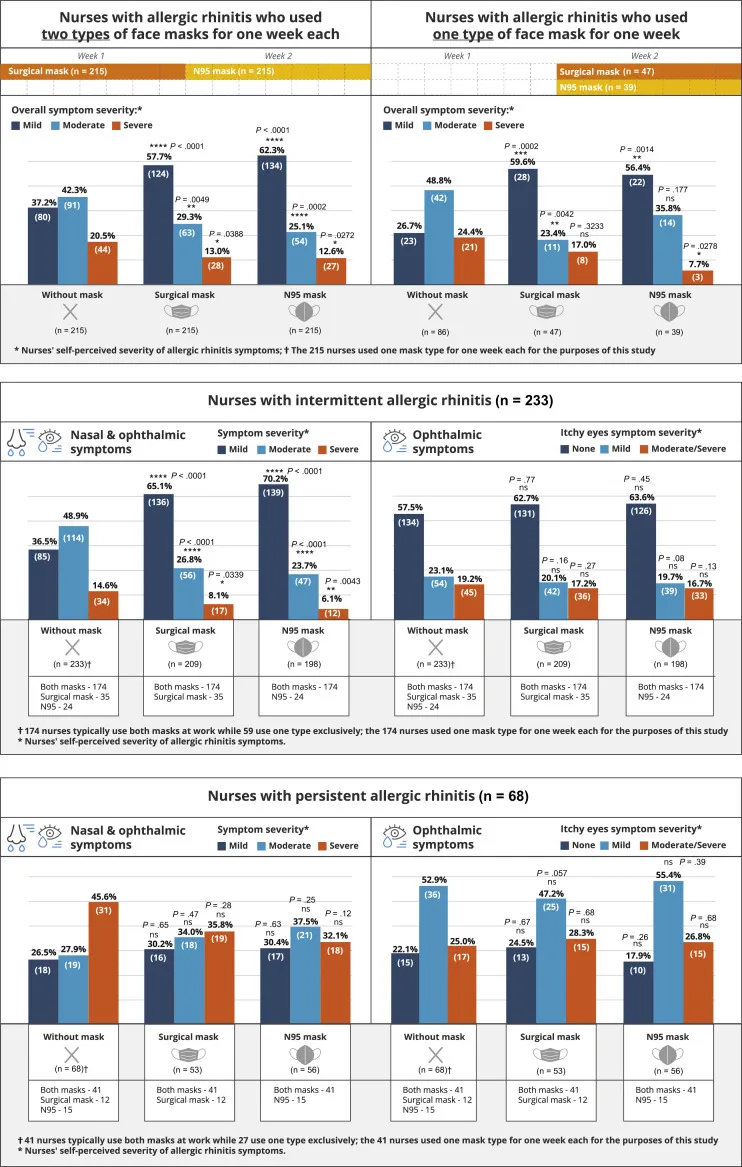
An interesting study done by the National Center for Biotechnology Information uncovered the potential for face masks to reduce seasonal allergic rhinitis. While COVID-19 has brought the uses of face masks to the forefront, their protection against airborne particles is one of the largest benefits.
Likely the biggest argument in favor of masks is to stop the wearer from spreading their own particulates through exhalation. Facial coverings also have the capacity to physically filter out some particles coming in as well.
What the study here found was that wearing face masks increases the temperature and humidity of breathed air between masks and airway openings, which may decrease nasal responses to bothersome allergens.
Whatever allergens are still able to get in may have a lesser negative impact on the wearer. Many of the negative effects of allergens are compounded by the dryer, lower humidity air being breathed during allergy season.
It is important to note that this study did not conclude a universal improvement, but did show improvements in some of the individuals who participated in the study.
Every individual is different and will have different reactions to different methodologies. The study did show reductions in allergic rhinitis symptoms and may provide you with extra protection if you have allergies.
I personally do have seasonal allergies and I know the feeling of when they are coming on. This past year when I woke up feeling like allergies were setting in, I wore a face mask outside during a windy day while playing disc golf in the woods. I did not have information on effectiveness but I gave it a try. Anecdotally, at least, I truly felt like it helped me stave off the onset of my allergies.
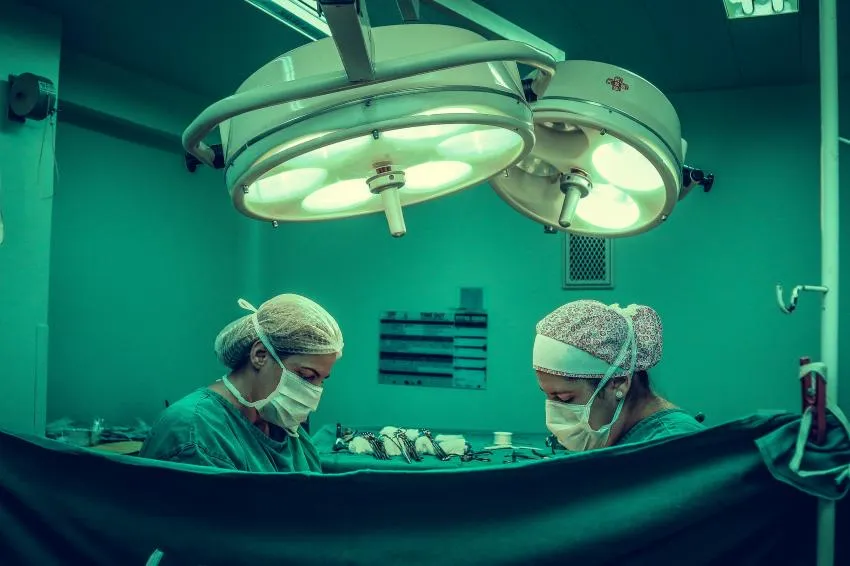
Many professions utilize masks as a way to protect the wearer, but mostly the people around them. In an environment that needs to remain safe, sterile, and clean, masks, gloves, and hairnets are commonplace and standardized.
Falling under 'universal precautions', doctors, nurses, and surgeons will wear such equipment in order to minimize risk and maximize protection for patients and coworkers.
In scenarios like surgery, when a patient has to be cut open and their insides are exposed, the infection becomes an extremely important issue to protect against.
Face masks, gloves, and hairnets all provide barriers to prevent germs, bacteria, and other potentially unwanted particles from leaving the doctor or surgeon, then entering and possibly infecting a patient.
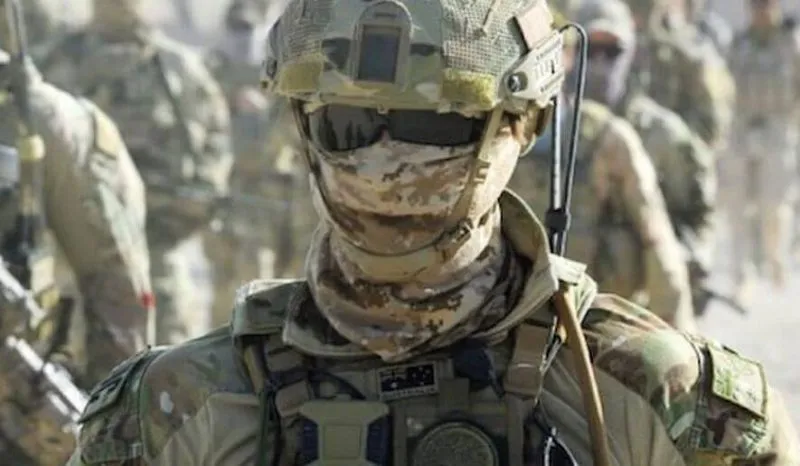
Special forces around the globe often wear facial coverings to protect themselves against being identified, as well as exposure to the elements. Whether they are looking to keep from inhaling dust on tours that require them to be in harsh desert climates or protection from the hot unrelenting sun, facial coverings help them achieve that protection.
They also are able to hide their faces and are much more difficult to identify by anyone they want to remain hidden from. Again, these uses are not new and unique to recent events, they have been utilized for a long time by many groups around the world.
Facial coverings have come to the forefront with the pandemic, however, there are multitudes of different ways in which they remain relevant and have used in our daily lives outside of stopping the spread of disease. We have seen the effectiveness of facial coverings in many functions, and they likely will not be going anywhere anytime soon.
Opinions and Perspectives
This really puts things in perspective. Face coverings have always been part of human civilization.
The practical benefits in both hot and cold weather really stood out to me. Nature can be harsh either way.
Its fascinating how something so simple can serve so many different purposes across cultures and time.
I agree with the article. Facial coverings aren't going anywhere because they're just too useful in many situations.
Good to see the fun aspects mentioned too. Masquerade balls and Halloween are great examples of recreational use.
The article really shows how facial coverings are more than just medical tools. They're versatile protection gear.
Those fishing gaiters seem really practical. Might get one for my next fishing trip.
Interesting how something so practical has also been part of ceremonies and celebrations throughout history.
Learning about the humidity effect on allergies was surprising. Science keeps teaching us new things.
Never considered how face coverings could be both warming and cooling depending on the situation.
The comparison between sunblock and physical barriers was helpful. Sometimes simpler is better.
I found the ceremonial mask history particularly interesting. Shows how long humans have used face coverings.
Anyone else feel like they're living in the future when they see all the high-tech UV protective gear available now?
The particle protection section was really informative. Helps explain why masks work for so many different scenarios.
I can relate to accidentally keeping a mask on while shoveling snow. It really does help with the cold!
As someone with sensitive skin, I'm definitely going to try using face coverings for sun protection now.
Great explanation of how facial coverings work in cold weather. No wonder my winter runs feel better with a mask.
The article really opened my eyes to how versatile facial coverings are. So many practical applications.
Started wearing a gaiter while cycling and it's great for bugs and road dust. Plus sun protection is a bonus.
The historical religious use of masks is fascinating. Really shows how deeply ingrained they are in human culture.
Good point about UV reflection on water. As a kayaker, I've learned the hard way about sun exposure from all angles.
The part about special forces using face coverings makes sense. Protection from both elements and identification.
Never knew about the allergy study results. Might have to try wearing a mask during my yard work this spring.
I appreciate how the article stayed focused on practical applications rather than getting into political debates.
The medical section was enlightening. Really shows why sterile environments are so crucial in healthcare.
Makes me think differently about those old photos of bandana-wearing cowboys. They knew something about sun protection.
Interesting point about the humidity between mask and face helping with allergies. Nature's little humidifier!
The variety of modern options like buffs and gaiters shows how facial coverings have evolved to meet different needs.
I work outdoors and can confirm the sun protection benefits. It's much better than constantly reapplying sunscreen.
This explanation helped me understand why my face stays warmer with a mask in winter. The trapped air concept makes total sense.
Love how the article balances practical modern uses with historical context. Really gives you the full picture.
The part about masks helping with allergies was eye-opening. I'll definitely keep mine handy during spring pollen season now.
Always wondered why field workers covered up so much in hot weather. The article explained it well with the sun protection aspect.
I'm a runner and discovered masks are great for cold morning runs. Keeps my airways warm and protected from the harsh air.
The protection angle throughout history is fascinating. Whether spiritual, physical, or medical, it's all about keeping safe.
My kid loves Halloween masks. Nice to see the fun aspects of masks mentioned alongside the practical applications.
The article makes great points about physical barriers versus sunblock. Sometimes simpler solutions are more effective.
That comparison of layered clothing to face coverings trapping warm air makes perfect sense. Basic physics at work.
I work construction and started wearing a gaiter for dust protection. Now I use it for sun protection too. Double benefit!
The cultural aspects of facial coverings are really interesting. Some societies have integrated them so naturally into their clothing traditions.
Masks for winter sports just make practical sense. Your face gets so cold otherwise, especially when the wind kicks up.
That study about allergic rhinitis is promising. I'm definitely going to try wearing a mask next allergy season to see if it helps.
The historical perspective really puts things in context. We act like facial coverings are new but humans have been using them forever.
Never thought about how the reflective sunlight off water makes sun protection even more important for fishermen and boaters.
I use gaiters for fishing all the time. The UV protection plus keeping my neck and face cool is a game changer on long days on the water.
The surgical mask section reminded me of how much we take sterile medical environments for granted now. Imagine surgery without these basic protections!
Interesting how special forces use face coverings not just for identity protection but also practical environmental defense against dust and sun.
My grandmother always covered her face while working in her garden. Guess she was ahead of her time with sun protection!
The bit about masks creating a humid microclimate for allergies was new to me. Makes sense why I breathe easier with one on during pollen season.
I found it fascinating how masks serve dual purposes in both hot and cold weather. Never thought about them helping to regulate temperature both ways.
Those workers in the field with full coverage including facial wraps are smart. Sun protection is so important for outdoor workers.
Actually, the article isn't about mandates at all. It's exploring the many voluntary uses of facial coverings throughout history and different cultures.
I still think mandatory mask requirements were an overreach. People should have the freedom to choose what they wear.
The connection between masks and allergy relief is interesting, but I wonder if different mask materials have varying levels of effectiveness?
Anyone else surprised by how effective masks are at blocking UV rays? I started wearing them while gardening and my face hasn't gotten sunburned once this summer.
The part about ski masks being a sweatshirt for your head made me laugh. So true though, I use them all winter for snowboarding.
Really appreciate how this article breaks down the practical benefits beyond just disease prevention. I've definitely noticed my seasonal allergies improving when wearing masks outdoors.
I never realized how many different uses facial coverings had throughout history. The religious and ceremonial aspects going back 30,000 years is fascinating!
